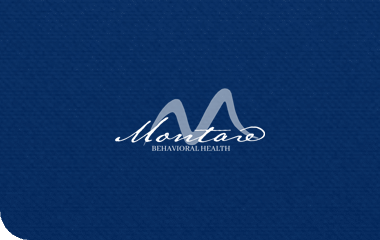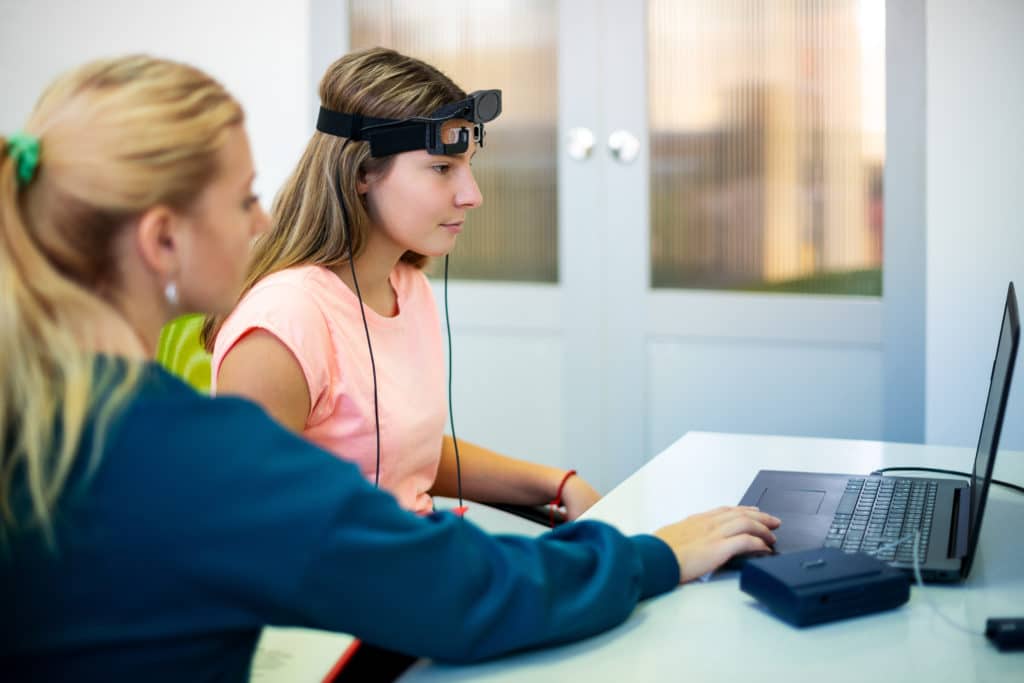There are all types of therapies that are used to help people that are suffering from mental health issues. One therapy that has become innovative to reduce the uncomfortableness with withdrawal is neurofeedback. This approach to treatment is also referred to as neurofeedback, EEG biofeedback, and brainwave biofeedback. Neurotherapy is a specific form of biofeedback that uses electronic monitoring of normal body functions to train a person to acquire control of that function.
Biofeedback can not only treat withdrawal, but can be used for migraines, chronic pain, and high blood pressure to name a few by bringing awareness to these physiological functions in hopes to manipulate them for a person’s advantage.
What is Neurofeedback?
Neurofeedback is designed to observe, qualify, and train someone’s brain waves and to help regulate brain function. Sing an electroencephalograph (EEG), the brain is measured, and the electrical activity is documented so that doctors and therapists can use the information to address any areas of the brain that may be experiencing any emotional dysregulation. This non-invasive procedure can give patients and providers a better indicator of what needs to be addressed with the ailments that are in question.
When an EEG sensor is used to track the electrical patterns on the surface of the scalp, brain waves are measured to detect activity. One of the particular reasons an EEG can prove to be so beneficial is because the sensors can discover a dysregulated brain meaning that it will be overly active when it should be calm and under-stimulated. A normal brain may correct these setbacks on its own in time and if it does not, then having a dysregulated brain will become the standard. This is where neurofeedback therapy becomes extremely useful.
One therapy session with neurofeedback can last between 30-60 minutes and may be scheduled two to three times a week. This therapy is safe and painless and does not involve any electric shock or medical machines. When therapy begins, the goal is to help reclaim optimal functioning of the brain and be able to eventually manage brain waves so that certain medical conditions and mental health issues are more readily handled.
Neurofeedback takes someone’s instincts and utilizes the feedback in the brain to learn new developmental skills that someone will need to become well. By using this state-of-the-art method, the brain can be taught to be more balanced and more healthful. Let’s take a deeper look at neurofeedback including when it’s used, how it’s used, and some specific examples of ailments that it can treat.
How Does Neurofeedback Work?
It’s important to know that neurofeedback is not actually a cure. What it is, is a method of managing or regulating the way the brain works so that it can function in a healthier manner. You can think of neurofeedback as a way of essentially reprogramming the way the brain acts and reacts to certain things happening that might be considered triggers.
This is done by repeated training sessions using a computerized neurofeedback program that essentially teaches your central nervous system to reorganize and regulate its brainwave frequencies. Neurofeedback assesses your brain and provides information about areas of dysfunction that are causing symptoms so that they can be treated directly.
When Is Neurofeedback Used?
Neurofeedback can be done on children, adolescents, and adults. It is used to help treat significant neurological disorders including seizures, behavior disorders, attention deficit disorder or ADD/ADHD, autism, ongoing developmental delays, acquired brain injuries, birth trauma, anxiety, depression, post-traumatic stress disorder, stress-related problems, and insomnia or interrupted sleep patterns. It can also be used as an adjunct intervention with other forms of therapy.
Here is a more in-depth look at how neurofeedback is used to combat some of the more common ailments:
ADD/ADHD
While the majority of people who suffer from ADD or ADHD take medication to help them manage their condition, studies have shown that neurofeedback can be just as effective as a treatment option. People with ADHD have brain maps that tend to show an excess of slow-moving theta waves, coupled with a deficit in sensory-motor rhythm. Neurofeedback can be used to train the brain in a way that restores the balance to the specific areas of the brain that are affected by ADD/ADHD. In fact, some studies have even shown that neurofeedback can help in better diagnosing ADD or even determining if it had been previously misdiagnosed.
Memory Loss
Studies have also linked neurofeedback training to improve memory. In fact, one study in particular by the National Center for Biotechnology Information found that neurofeedback training significantly improved the visuospatial short-term memory in 70% of the study participants. It is believed that neurofeedback is so successful in helping with memory loss because it helps increase neuroplasticity, which is correlated with more synaptic growth in the hippocampus, a part of the brain critical for short-term memory.
Anxiety
Anxiety is usually associated with symptoms of racing thoughts, feeling “on edge,” and/or sleep disturbances. Many times this can be a result of a surplus of fast-moving beta waves and a deficit of alpha waves that are commonly associated with calm and focus. Neurofeedback can help in increasing alpha waves, as well as reducing beta waves. This can help a person who suffers from extreme cases of anxiety feel calmer.
Depression
Depression symptoms can manifest differently when brain mapping, but it’s not uncommon to see a dysregulation of slow-moving waves associated with depression symptoms. This is why many people who suffer from depression suffer from some sort of sleep issue as well, such as irregular sleeping patterns. Neurofeedback can be used to help decrease depression symptoms by undergoing training 2-3 times a week for an 8-week period.
Sleep
Many people have used neurofeedback training to improve their sleep quality. Sleep disturbances can often be associated with dysregulation of slow-moving delta waves. Many people with sleep issues may find that they don’t have enough slow-moving waves at night to trigger the brain to fall asleep. At the same time, they also may find themselves with a surplus of those same waves during the day, leading to drowsiness or a lack of focus. Neurofeedback can help bring these waves back into balance, which can help improve overall sleep quality.
What Can I Expect From Neurofeedback Treatment?
Typically, neurofeedback therapy consists of once-a-week sessions for an average of up to 20 weeks. Since everyone and every condition is different, some people will be able to complete treatment in under 20 weeks while some people might need longer. During each therapy session, you will be hooked up to a computer EEG program where sensors are attached to your scalp.
The program will then process your brain signals and provide information about various brainwave frequencies. Using something that looks like a video game, you will be able to watch the graphics and listen to music while your brain and central nervous system receive feedback from the program. That program will then direct brainwave activity toward a more desirable state. Because of the sophistication of the computer program, feedback and results are instantaneous.
Are There Any Side Effects From Neurofeedback?
Just like any other type of treatment, there can be some side effects to neurofeedback therapy. One of the most common side effects is fatigue. That’s because neurofeedback is the brain equivalent of work out. While brain training and physical training are similar, the way in which the fatigue is felt is different. Brain fatigue feels much like the mental tiring after learning a complex mental skill, or the exhaustion felt after speaking a non-fluent language.
People who suffer from more serious conditions may experience an increase in old familiar feelings before the difficulty passes away. Additionally, people who suffer from more serious conditions may also experience vivid dreams as the mind settles into a more balanced position.
Those that have suffered from a brain injury or head trauma tend to be more sensitive to neurofeedback. Some people have reported feeling nausea, dizziness, and light sensitivity in the beginning.
What Should I Look For in A Neurofeedback Therapist?
Licensed mental health professionals who have been trained to use neurofeedback equipment and programs can provide neurofeedback services. However, just like in many other walks of life, it’s important to find a therapist that specializes in your specific condition or, at the very least, has had success in treating your condition. In addition to finding someone that can treat your condition, it is also important to find a therapist that you feel comfortable talking to. After all, you are going to be sharing very personal information with this person as well as discussing results and progress.
Are You Interested in Neurofeedback Treatment?
At Montare Behavioral Healthcare, your mental health and well-being is our number one priority. We offer innovative therapies, such as neurofeedback, to help someone who is struggling with a mental illness or other brain-related issues.
Our qualified therapists use neurofeedback to retrain the brain for improved impulse control and increase rational thinking for better results in recovery. Contact us today to learn more about our treatment options and find out if neurofeedback is right for you.
References
https://www.ncbi.nlm.nih.gov/pmc/articles/PMC4666277/
https://www.neurocorecenters.com/blog/benefits-of-neurofeedback
https://www.psychologytoday.com/us/therapy-types/neurofeedback
https://brainworksneurotherapy.com/faq/neurofeedback-side-effects






